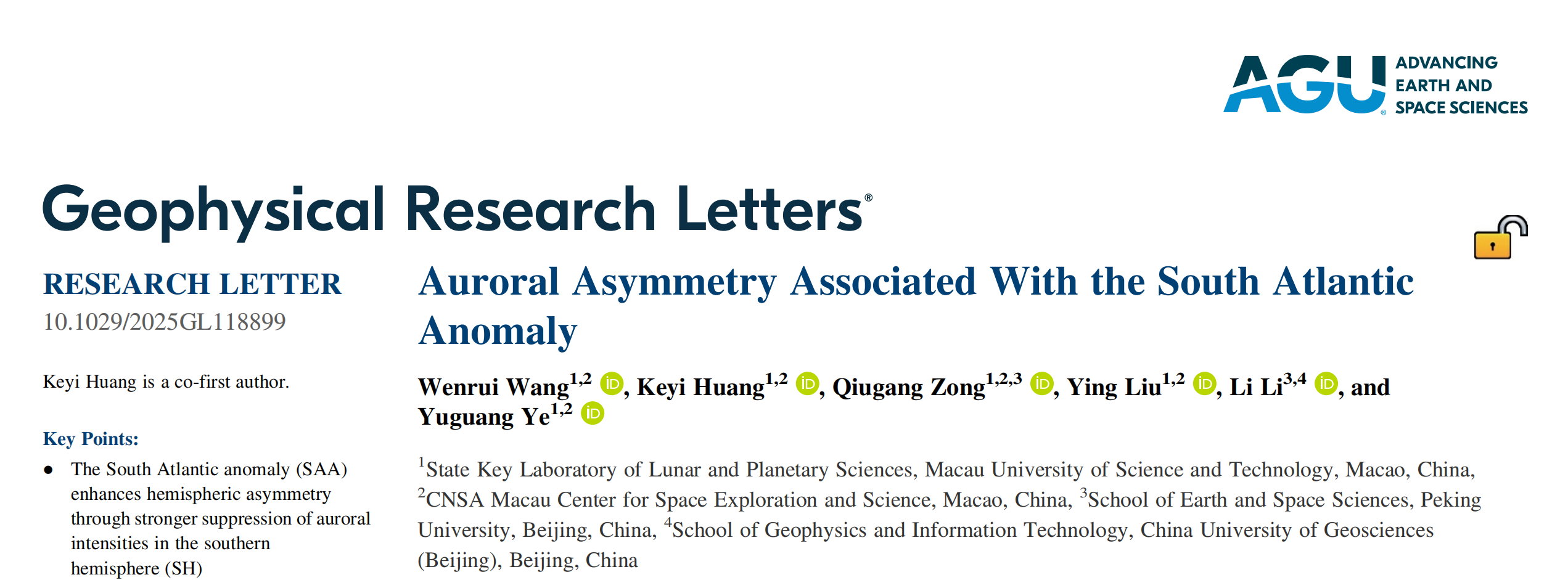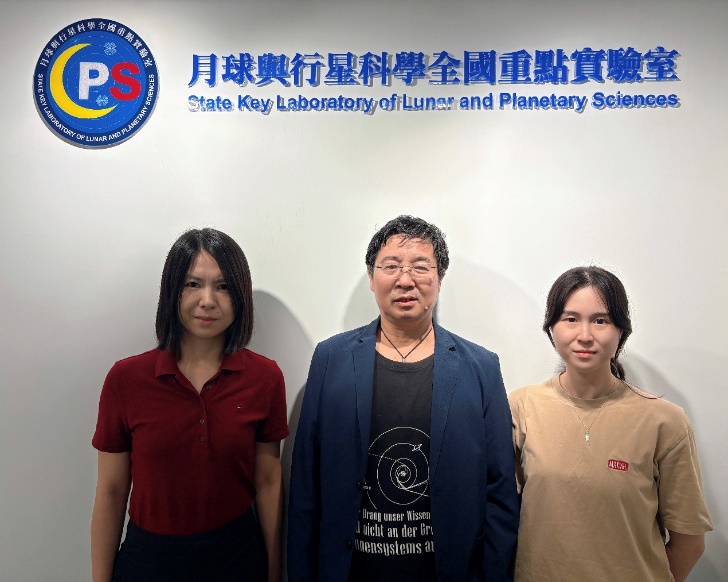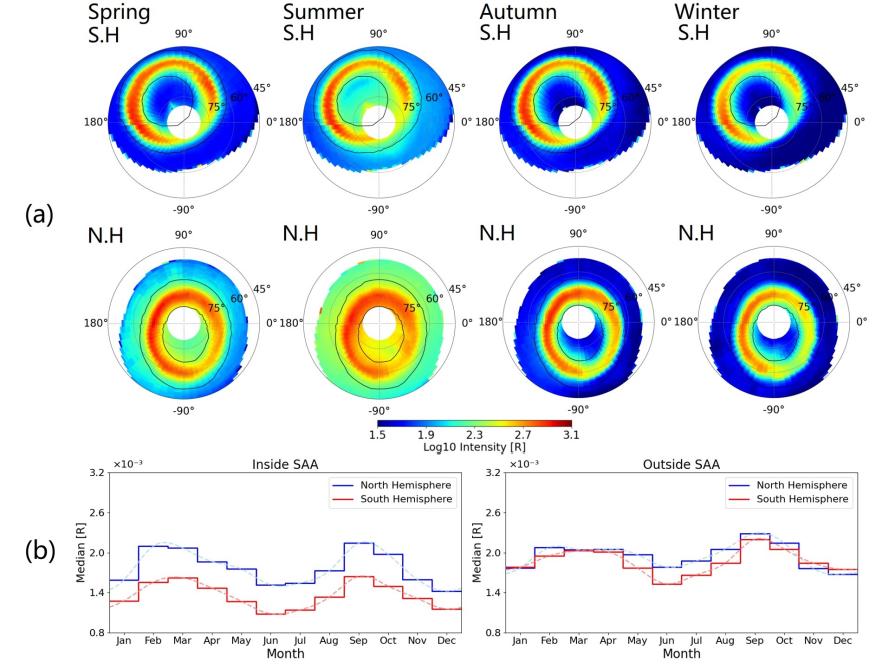
Keyi Huang, PhD student from the State Key Laboratory of Lunar and Planetary Sciences (SKLPlanets) at Macau University of Science and Technology (MUST), advised by Assistant Professor Wenrui Wang and Chair Professor Qiugang Zong, analyzed multi-year satellite observations and discovered a modulation effect of the South Atlantic Anomaly (SAA) on Earth’s auroral activity. The results were published in the top international journal Geophysical Research Letters (GRL). The paper lists MUST as the first affiliation.

From left: Assistant Professor Wenrui Wang, Chair Professor Qiugang Zong, and PhD student Keyi Huang
A aurora is a luminous phenomenon produced when energetic charged particles collide with neutral constituents in the upper atmosphere. It provides a direct visual manifestation of solar wind–magnetosphere coupling in the ionosphere. Beyond its spectacular appearance, it visualizes disturbances in the near-Earth space environment and has long been a focal topic in geophysics. On Earth, the motion of charged particles is guided by the geomagnetic field, so auroral activity usually occurs between latitudes 60° and 75°. The SAA is one of the regions where the magnetic field at Earth’s surface is markedly weaker, with its center located near 30°S in the equatorial sector. Because of the reduced field strength, the SAA generally exhibits elevated particle radiation and is therefore a key region for space-weather monitoring.

Seasonal distribution and trends of auroral intensity under the impact of the SAA
Using multi-year satellite observations, this study identified a linkage between the low-latitude SAA and high-latitude auroral activity, confirming the SAA’s modulatory role on auroras. Statistical results show that the SAA exerts an overall suppressive effect on southern-hemisphere auroral intensity, thereby enhancing the global north–south asymmetry of auroral intensity under the local geomagnetic modulation of the SAA. In addition, this modulation displays dawn–dusk asymmetry, seasonal dependence, and a strong correlation with geomagnetic activity. By focusing on the aurora and the SAA, the study reveals the complex characteristics of the near-Earth space environment and provides a pathway for exploring magnetospheric processes on other planets.
Article link: https://agupubs.onlinelibrary.wiley.com/doi/10.1029/2025GL118899




























